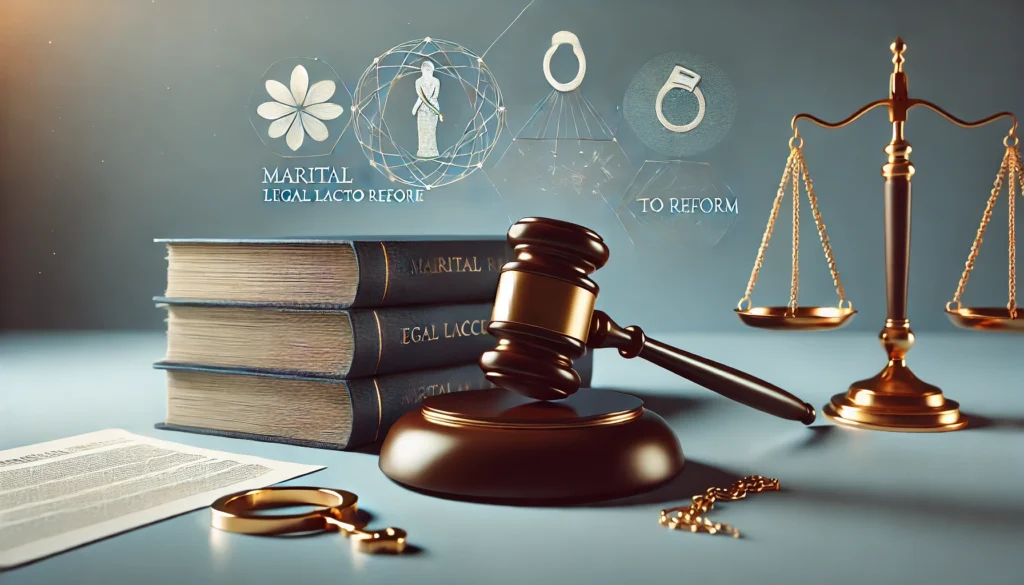Published on: 25th October 2025
Authored by: Aastha
Shambhunath Institute of Law
Abstract
Environmental protection has become one of the most urgent issues of the 21st century. This makes the courts play an increasingly important role in ensuring ecological integrity through judicial activities and interpretation of environmental law. This article examines the transformative role of justice in environmental protection and analyzes the pioneering judgments that have shaped global environmental testing. Through a comprehensive investigation of key cases from different jurisdictions, this study demonstrates how judicial interventions have evolved into a proactive approach to determining the fundamental principles of environmental law and creating precedents that continue to influence environmental governments today.
Introduction
The relationship between law and environmental protection has undergone major changes over the past 50 years. The terms of the legal framework are the basis of environmental management, but it is often the judiciary that brings these laws to life by interpretation, application and enforcement. The court developed as a key judge in environmental disputes, bringing competing benefits between development and preservation, individual rights and collective wells, and current needs and future sustainability.
The legal approach to environmental protection has evolved from a narrow, human – centric perspective to a more holistic, environmentally focused understanding. This development is particularly prominent in the pioneering judgments that not only have specific environmental conflicts but also have fundamental principles that guide environmental law and policies. This study examines how courts interpret constitutional provisions, laws and international treaties to create a robust framework for environmental protection. This often closes the gap due to inaction or inadequacy of law or inadequacy.
Evolution of Environmental Jurisprudence
- Historical Development
The development of legal environmental protection can be tracked at several different stages. Each is characterized by a different approach to environmental law and different levels of legal behaviorism. The early stages, including much of the 20th century, were characterized by a narrow, human centric approach to environmental issues. The courts were primarily concerned with environmental issues through the traditional concept of property rights, focusing on harassment, violations and damages to private property rather than broader ecological damages.Environmental Guard Stations in the 1960s and 1970s marked a critical turning point inlegal environmental protection. During this time, inclusive environmental laws have been imposed in many countries, increasing public awareness of environmental issues. The courts show that environmental protection has a willingness to tackle complex ecological relationships that largely ignore traditional legal frameworks. The courts increasingly recognize environmentalrights as a fundamental human right and have developed innovative procedural mechanisms determine the broad principles that promote environmental conflicts and guide environmental decisions. This phase saw an increase in environmental courts, professional judicial procedures, and cross-border environmental testing. The first stage, which expanded into the mid – 20th century, was characterized by a close interpretation of environmental rights, primarily focusing on property rights and destruction laws. In the second stage, the recognition of environmental law and environmental rights began as fundamental human rights in the 1960s and 1970s. The third and current phases are characterized by legal action. Courts pursue a comprehensive approach to environmental protection, often surpassing traditional legal restrictions to ensure ecological conservation
2. Constitutional Foundations
Constitutional provisions relating to environmental protection have created the basis for most of the environmental activities of the judicial system. Many modern constitutions either contain explicit environmental rights or provide environmental obligations to the state. This creates a constitutional mandate of environmental protection that can enforce courts through judicial review. Judiciary plays an important role in the interpretation of these constitutional provisions, and has often expanded its scope and application. The court recognise that environmental protection is not merely a political guideline, but a fundamental obligation of the state, and is essentially related to the right to life and human dignity.
For example, the right to life is interpreted to include rights to a healthy environment, but the clause was used in the same protective clause as the appropriate procedure that question environmental policies that disproportionately affect certain communities. Critics argue that aggressive legal environmental protection could undermine democratic decisions and exceed the correct limits of judicial authorities. Advocates argue that environmental protection is a fundamental constitutional obligation to enforce courts regardless of political considerations.
3. Principles of Environmental Law
Justice decisions have found several important principles that form the basis of environmental law. This includes education for preventive principles, dirty principles, sustainable development, justice among generations, and public trust. The courts consistently apply these principles to surround environmental disputes and manage political decisions.
Judicial Powers and Environmental Enforcement
Enforcing environmental laws brings about unique difficulties that require courts to use their powers in new and sometimes unusual ways. Unlike usual legal issues that have clear parties and measurable damages, environmental cases often involve harm that is spread out, complex cause-and-effect relationships, and effects that might not be seen for many years or even decades. This makes things more complicated and has led to the creation of special court powers and enforcement methods aimed at protecting the environment.Courts have created several important tools to support environmental protection.
One of these is injunctive relief, which is a common way to stop environmental harm. This allows courts to tell polluters to stop their harmful activities right away or to follow specific environmental rules. Also, the precautionary principle has been accepted by courts as a reason to issue injunctions even when there is not enough scientific proof of harm. This is because environmental damage can be hard to reverse if action is delayed until there is complete proof.Mandamus jurisdiction has been especially useful in environmental cases. It allows courts to make government agencies carry out their legal duties related to environmental protection. Courts have used this power to push for the implementation of environmental rules, the completion of environmental impact studies, and the enforcement of pollution control standards. The Indian Supreme Court’s ongoing mandamus in various environmental cases has given the court a kind of oversight role that goes beyond normal judicial limits. Courts have also adapted their contempt powers for environmental enforcement. They use both civil and criminal contempt to make sure people follow environmental orders. Because environmental violations can be serious.
Public Trust Doctrine in Environmental Protection
The public trust doctrine is one of the oldest and most important legal ideas used to protect the environment. It says that certain natural resources are held by the government for the benefit of everyone. This idea has been updated and expanded by modern courts to deal with today’s environmental issues, offering a strong legal basis for protecting the environment that goes beyond specific laws. The roots of the public trust doctrine come from Roman law and English common law. These legal systems recognized that certain resources like waterways, shores, and wildlife belonged to the government, but were meant to be used for the public good. This idea was brought into American law and has been developed by courts to cover more areas of environmental protection.
In recent years, courts have greatly widened the scope of the public trust doctrine. The Illinois Central Railroad case showed that states have a duty to protect certain resources for the public, even if they try to pass this responsibility to lawmakers. Later cases have broadened the doctrine to include things like groundwater, air quality, wildlife habitats, and the stability of the climate The movement to apply the public trust doctrine to climate change argues that the atmosphere is held in trust for current and future generations. Governments are seen as having a duty to protect the climate. While courts have not always ruled in favor of this view, it has had a major impact on climate-related lawsuits around the world and helped set important legal standards for environmental responsibility across generations.
Courts have also had to create new ways to enforce the public trust doctrine.
They have stopped harmful activities, required government agencies to consider public trust responsibilities when making decisions, and ordered the restoration of damaged natural resources. Because the trust obligations are ongoing, some courts have kept a long-term oversight of public trust cases to make sure the rules are followed. There has been some conflict between the public trust doctrine and private property rights. Courts have had to find a balance between protecting public resources and respecting private property. This has led to careful rulings that protect both interests. Legal ideas about property rights have also been influenced by the public trust doctrine, with some courts recognizing that private property rights must follow existing public trust obligations.
The public trust doctrine has also drawn more attention from courts regarding future generations.
Judges now recognize that trust obligations go beyond the present and include future people. This time-based aspect of the doctrine has shaped how courts handle environmental cases with long-term effects.
Landmark Judgments in Environmental Protection
M.C. Mehta v. Union of India (Ganga Pollution Case)[1]
In 1985, M. C. Mehta filed a legal petition asking the court to issue a directive to stop leather tanneries from dumping their waste and polluted water into the Ganga River. In this case, the petitioner asked the court to tell the Supreme Court to stop the tanneries from releasing polluted water into the river until they installed special treatment systems to clean the harmful waste and stop water pollution. The court talked about the importance of certain parts of the Indian Constitution that protect the environment. Article 48- A [2] says the government should work to protect and improve the environment and save forests and wildlife. Article 51- A [3]says every citizen has a duty to protect and improve the natural environment, including rivers and forests. The court mentioned the importance of the Water (Prevention and Control of Pollution) Act, 1974. This law was made to stop water pollution and keep water clean. It also created central and state-level boards with the job of controlling water pollution. The court then asked what a trade effluent is. A trade effluent is any type of waste, in solid, liquid, or gas form, that is released from a factory or business doing a trade or industrial activity, except for household wastewater. It was noted that the leather industry, along with paper and textile industries, uses a lot of water. Most of this water is then released as wastewater. This wastewater contains harmful chemicals that lower the oxygen level in river water, killing fish and causing bad smells. The court said that even though there are laws like the Water (Prevention and Control of Pollution) Act, 1974, no proper steps had been taken by the State Board to stop the pollution of the Ganga River. Also, the Central Government had not taken any effective action to stop the pollution caused by tanneries in Kanpur. In a major decision in 1987, the court ordered the closing of several polluting tanneries near Kanpur. The court said, “Just as an industry that cannot pay minimum wages to its workers cannot be allowed to continue, a tannery that cannot set up a basic treatment plant cannot be allowed to continue either. ” As a result, the court required the tanneries to set up primary treatment plants or at least secondary treatment plants. This was the minimum the tanneries should do in the circumstances of this case.
Rural Litigation and Entitlement Kendra & Ors. v. State of Uttar Pradesh & Ors. [4]
This case is also referred to as the ‘Dehradun Valley Litigation’. In the Mussoorie hill region of the Himalayas, quarrying activities were taking place. Limestone was. being extracted by blasting the hills using dynamite. This method led to cave-ins and landslides because the mines were dug deep into the hill slopes, which is itself an illegal activity. Due to a lack of vegetation, numerous landslides occurred, resulting in the deaths of villagers, destruction of their homes, livestock, and farmland. The mining companies argued that the case should be dismissed and that the issue should be handled by administrative authorities under the Environment Protection Act. However, the court rejected their arguments, stating that the litigation had already started and that important court orders had been issued before the Environment Protection Act was enacted. A monitoring committee was later formed. The committee directed the company to follow certain guidelines, but the lessee continued to quarry limestone in an unsound manner, ignoring the committee’s instructions. In an application filed by the committee, the court ruled that the secret quarrying activities of Vijay Shree Mines had caused serious damage to the area and ordered the company to pay Rs. 3 lakhs into the Monitoring Committee’s fund. After many years, the Supreme Court of India ruled that pollution from quarries negatively impacts people’s health and safety, and therefore, such activities should be stopped. The right to a healthy environment is considered part of the right to life and personal liberty outlined in Article 21 [5]of the Constitution. This case was the first in which the Supreme Court had to weigh environmental and ecological concerns against industrial demands on forest resources.
The Court issued the following directions:
- Orders that mine lessees whose operations were terminated by the court would be given priority for leases in new areas open to limestone mining.
- Orders that the Eco-Task Force of the central department of Environment reclaim and reforest the area damaged by mining and that workers displaced by mine closure be given priority for jobs with the Eco-Task Force operations in the region.
Conclusion
The judiciary played a transformative role in environmental protection and was developed by a response facility that resolves conflicts to active forces that influence environmental policy and leadership. Through its pioneering judgment, the court decided on the fundamental principles of environmental law, recognised environmental rights as a human right, and created innovative corrective mechanisms for environmental protection. Although courts have made a significant contribution to environmental protection, they can be used in institutional restrictions, concerns about democratic legitimacy, and enforcement agendas that limit their effectiveness. The court must adapt its approach to address these challenges, and at the same time maintaining legitimacy and validity.
The role of justice in environmental protection is not only to resolve legal disputes, but also to the survival and the presence of wells for current and future generations. As environmental challenges become increasingly complex and urgent, the role of justice in environmental protection becomes even more important. They represent the collective efforts of humanity to address environmental challenges through the rule of law and demonstrate the continued relevance of judicial institutions in protecting our common environmental cultural heritage.
[1] M C Mehta v Union of India (1988) AIR 1988 SC 1037
[2] Constitution of India 1950, art 48-A
[3] Constitution of India 1950, art 51-A
[4] Rural Litigation and Entitlement Kendra v State of Uttar Pradesh (1985) AIR 1985 SC 652
[5] Constitution of India 1950, art 21




